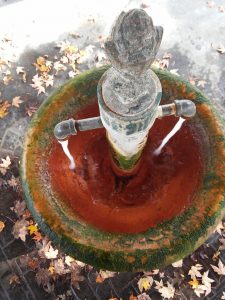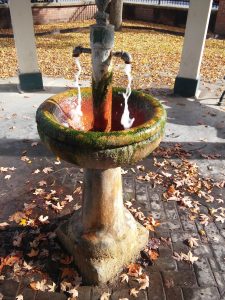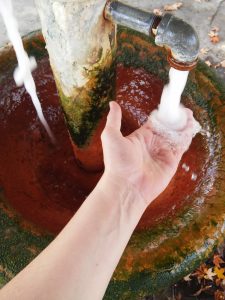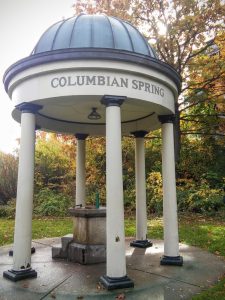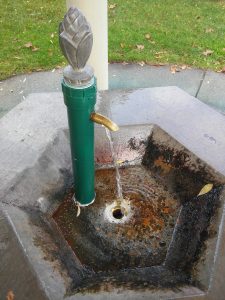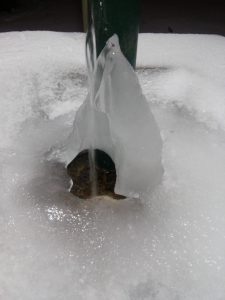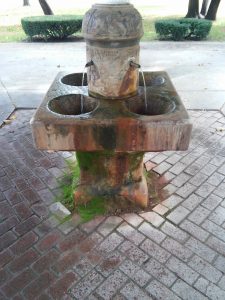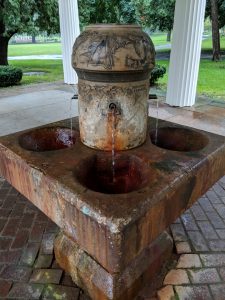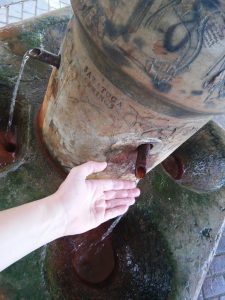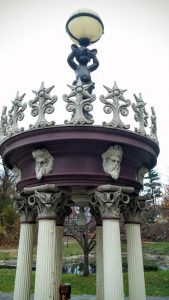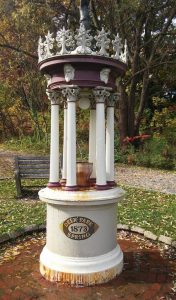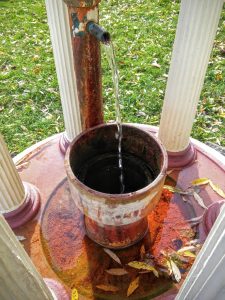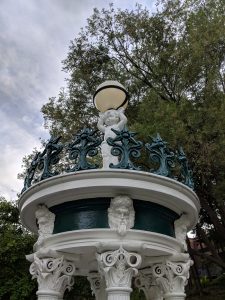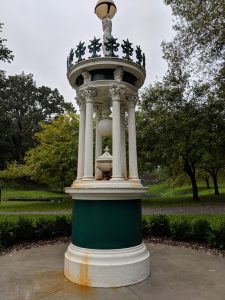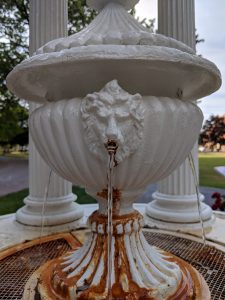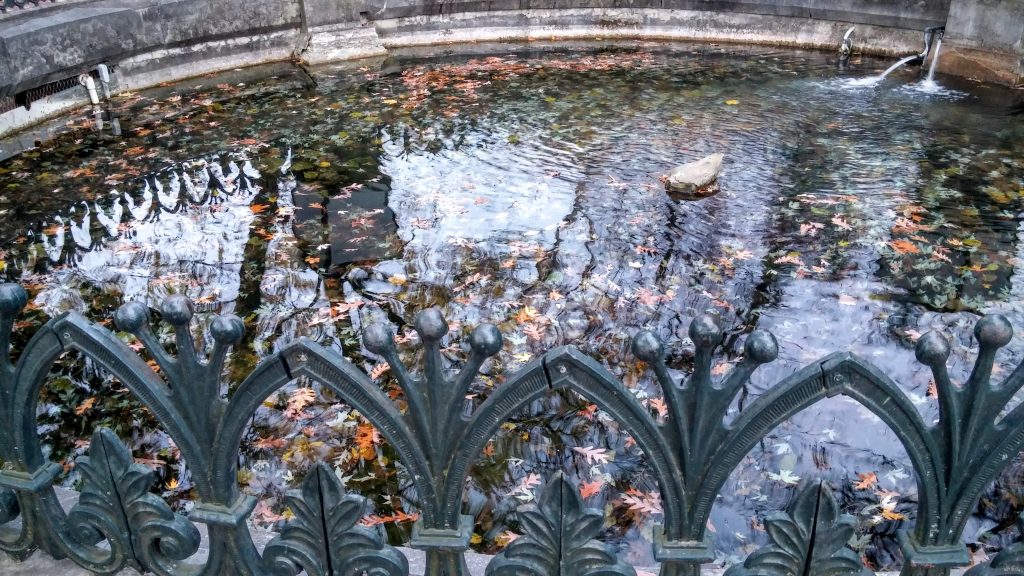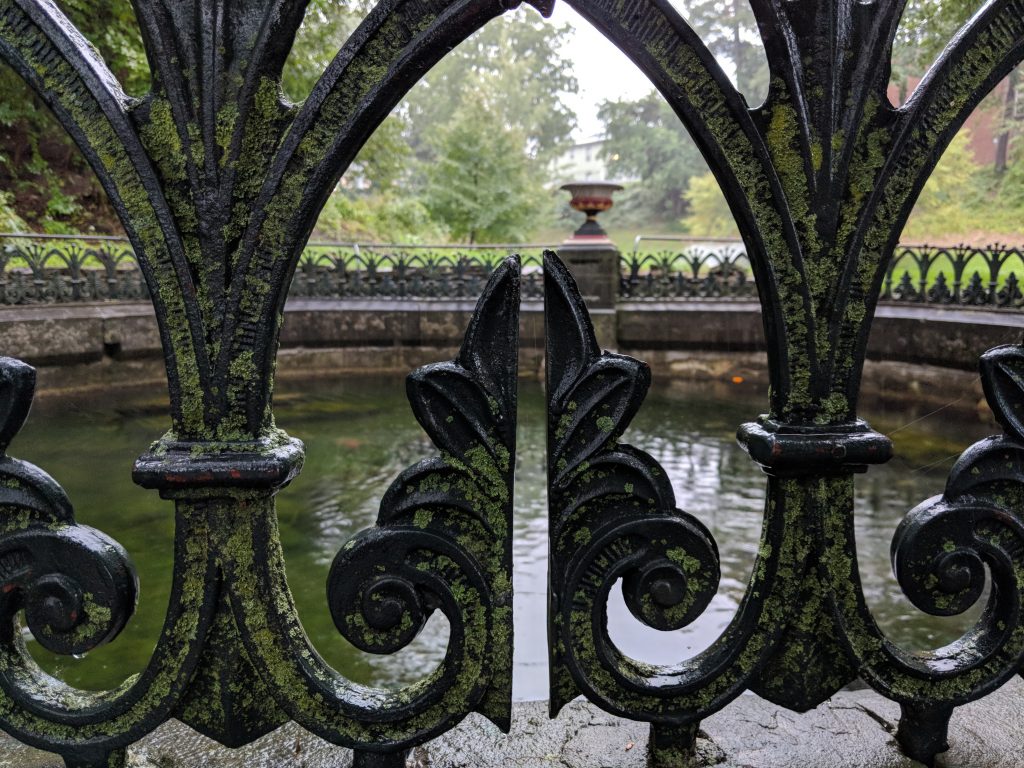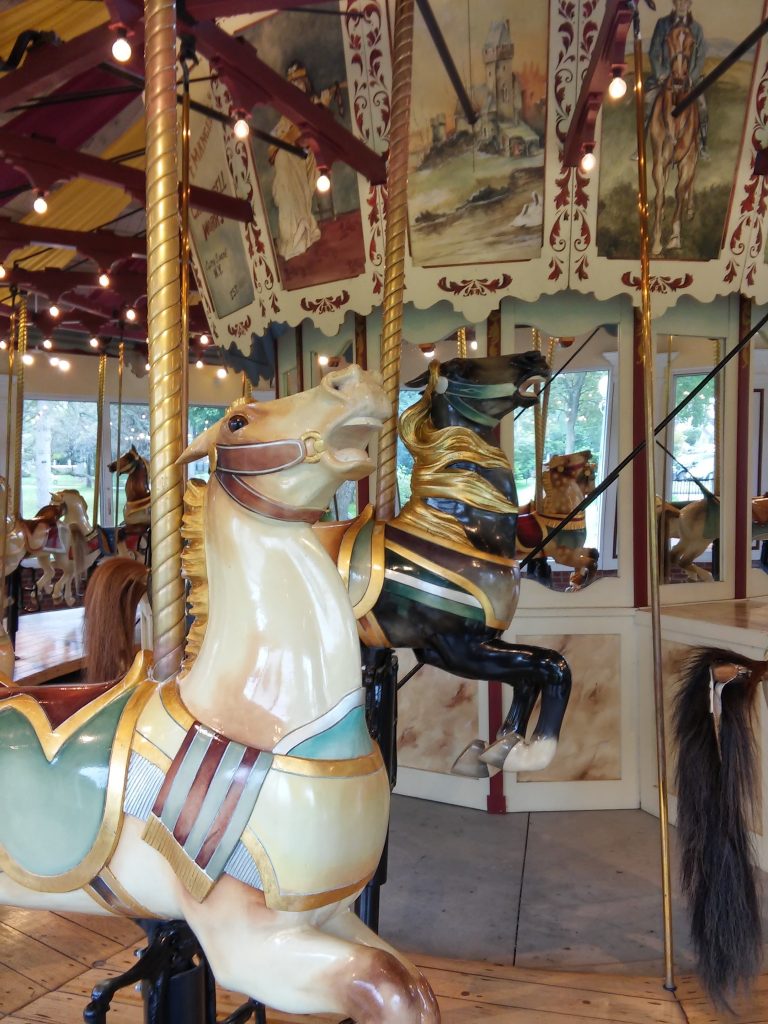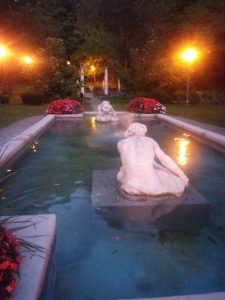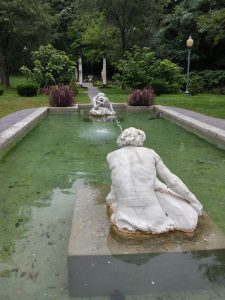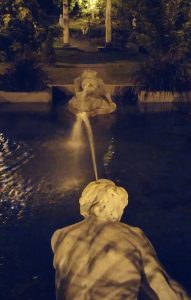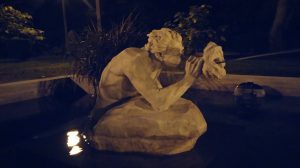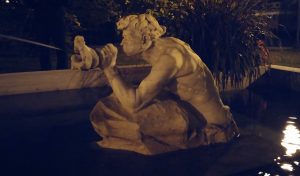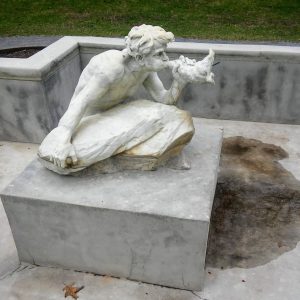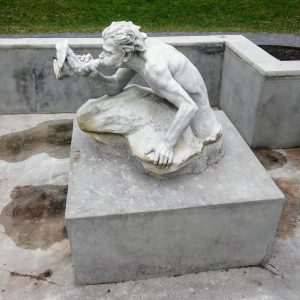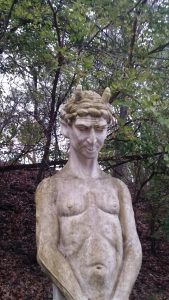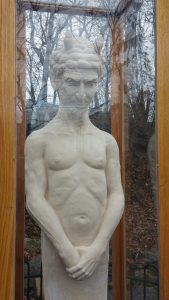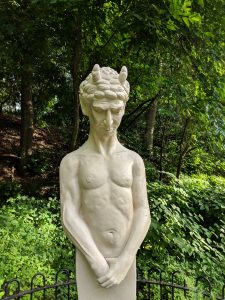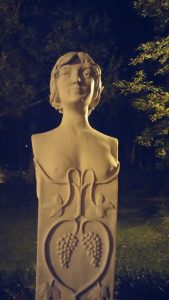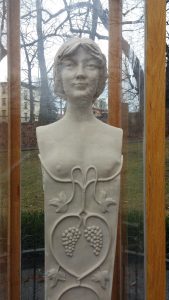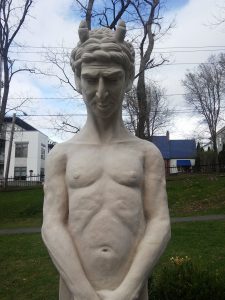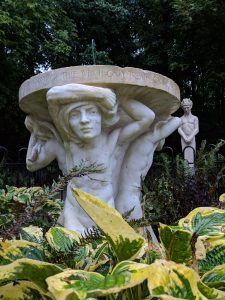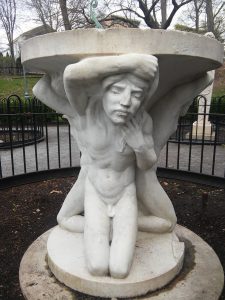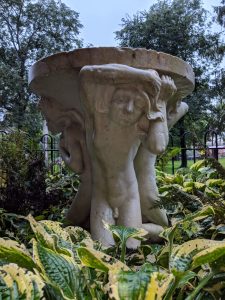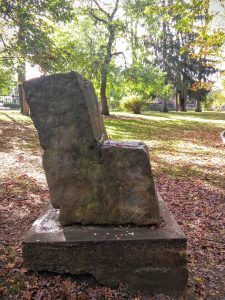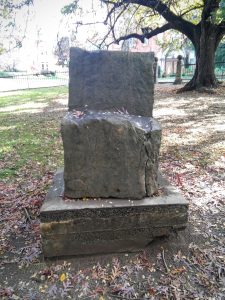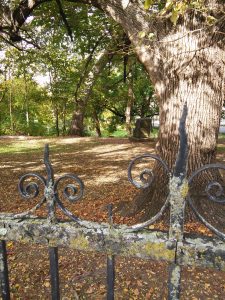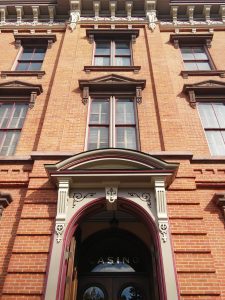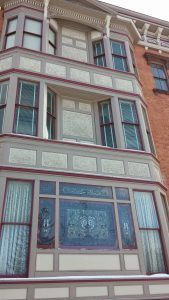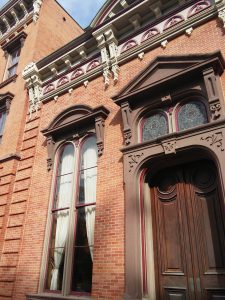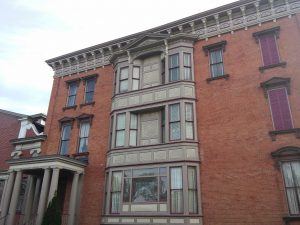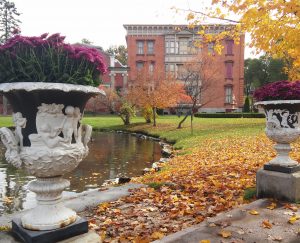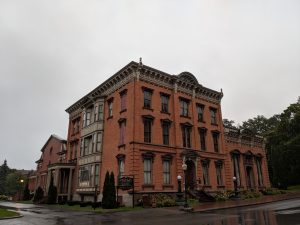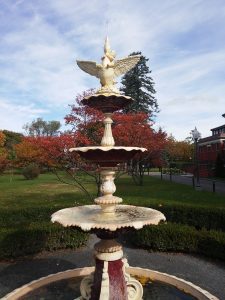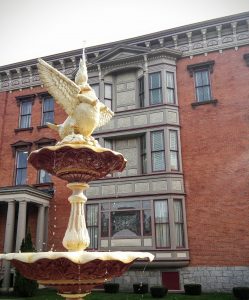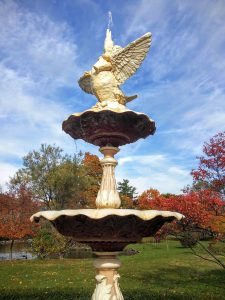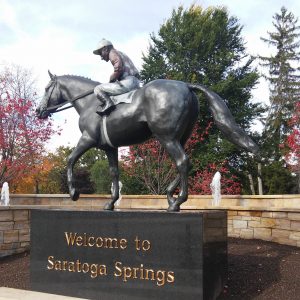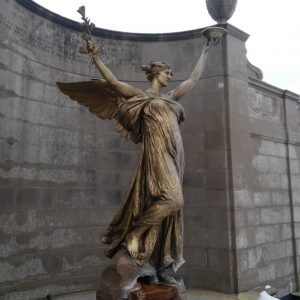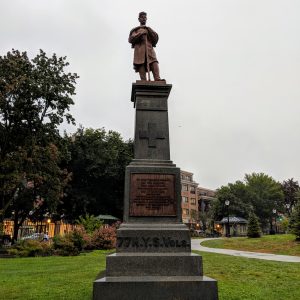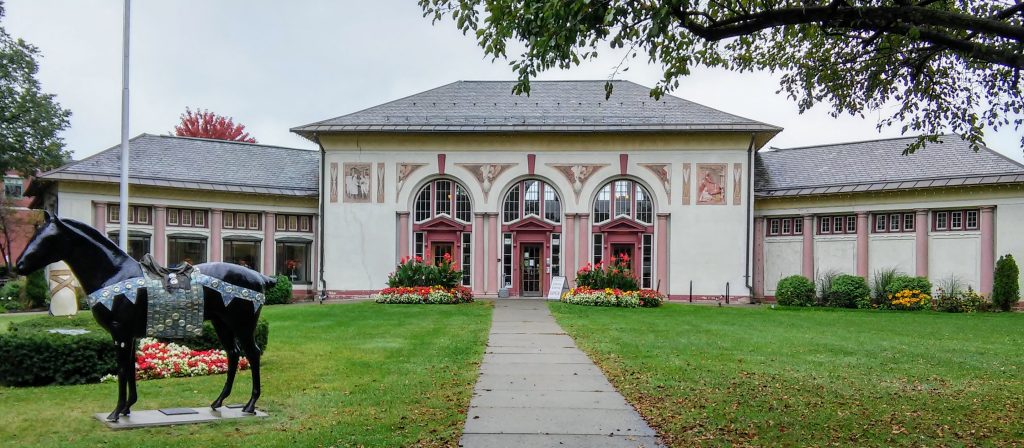Historic Congress Park
The mineral springs are by far my favorite thing about Historic Congress Park, but there are many other features in the park worth seeing if you’re in Saratoga Springs, New York. The park is situated in the center of downtown, between the Saratoga Race Course and Broadway, so it’s fairly easy to just happen upon it if you’re grabbing a bite to eat during race season.
November 2014 was the first time I ever entered Congress Park in search of natural springs. Since then I have noticed that restoration is a constant challenge throughout the park. Because the park is located in the middle of town and can be accessed by anyone, pretty much any time of the day or night, vandalism occurs far too often, resulting in damaged statues and fountains. What surprises me the most isn’t that humans are destructive of history and art, but that people behave this way in a public space despite all the obvious surveillance cameras in the park.
The Springs
Hathorn #1
Discovered in 1866, Hathorn #1 is a fun spring to have friends and family taste when they visit to experience the natural carbonation and salty mineral taste that exhibits the very essence of Saratoga Springs.
Columbian Spring
“Discovered by Gideon Putnam in 1806, this mineral spring is no longer active. Fresh municipal drinking water flows from a fountain beneath the Federal style domed pavilion.” Park Brochure
“The supply of water from the springs seemed inexhaustible. However, in the 1890’s, when companies began to pump huge amounts of water to extract carbon dioxide gas, some of the springs ceased to flow.” Interpretive Sign
For a long time, I assumed the Columbian Spring was exploited to the point of depletion, and that was the reason why city water flows there today. It turns out I was wrong.
“In the 20th century, anti-gambling legislation, two World Wars and the Depression brought hard times to Saratoga Springs. Congress Park was neglected and fell into disrepair. Statues were stolen or vandalized. It ceased to be a place of beauty. As a final indignity, Congress Spring, a City treasure, was no longer flowing, having been covered with rubble as the coup de grace in a dispute between New York State and the village in the early 1900s.” Park Brochure
Congress Spring
“John Clarke, who opened the first soda fountain in New York City in 1819, came to Saratoga in 1823. He purchased the Putnam family’s springs, added a bottling plant and shipped Congress Spring water nationally and internationally. From the swampland surrounding the springs he created Congress Park, opening it to the public.” Interpretive Sign
Deer Park Spring
“The Deer Park Spring, originally known as the Fresh Water Spring, was tubed in 1876 when Congress and Empire Spring Water Company improved the southern end of Congress Park. At that time, the pond and surrounding area included an enclosed fence where tame deer were kept, hence the name of this part of the park was “the deer park.”
“This cast iron fountain was purchased from Andrew Handyside Foundry in London, near the same time, and was likely designed to emulate the Choragic Monument of Lysicrates, located in Athens, Greece. It is one of four in the world known to still be in good repair and service.
“Drinking from the mineral springs was a social experience for visitors. Deer Park Spring’s fresh water was a great alternative for those who wanted to participate in the “taking of the waters,” but could not tolerate the taste or smell of the potent mineral springs. The fresh water source could not be maintained safely and has since been retapped and flows with mineral water from a source in Congress Park. The fountain was most recently restored in 2018.” Interpretive Sign
Before Restoration
After Restoration
I highly recommend tasting every spring possible in Saratoga Springs. Each one is unique and has their own story to tell.
The Reservoir
My favorite thing about this reservoir is that any time of year, even in the freezing cold of long winters, fish swim here! The water that fills this elegant pool flows from underground sources at a temperature that doesn’t appear to freeze.
Congress Park Carousel
“The Congress Park Carousel was carved by Marcus Charles Illions, a wood carver of Russian heritage who was known for creating horses with flamboyant heads and well-decorated bodies. When the carousel made its debut in Saratoga County in 1910, its twenty-eight horses sat in two rows with flying manes and real horse hair tails. Over the years, riders enjoyed the carousel at several different locations in the region.
“According to the National Carousel Association, of the 3,000 to 4,000 wooden carousels carved in America between 1885 and 1930, fewer than 150 still operate today. The Congress Park Carousel is the only two-row carousel carved by Marcus Illions that remains intact.” Interpretive Sign
I’ll never forget, the day I rode this lovely carousel.
In the beginning I was nervous. Nervous about mounting the horse. What if I couldn’t maneuver the art of it gracefully and I fell?
The carousel horses are old. I felt like something hand carved in the late 1800s early 1900s should be, or would be, considered fragile. Truly, I was afraid of breaking it.
Also the question came to my mind, “Am I too old to be riding a carousel?
Once I got over my fear of breaking the horses, I really had fun in spite of myself. It had a playful quality about it and reminded me of being a child.
Spit & Spat
The Triton Pool
“In Greek mythology, Triton was the son of Poseidon (Roman name, Neptune) the god of the sea. Triton was half dolphin and half man. He created winds and waves at Poseidon’s bidding by coming to the surface of the sea and blowing through a conch shell.“The representations here are probably based upon a painting by Annibale Carracci, an early Baroque artist who resided in Bologna, Italy. It is believed that they illustrate a story told in Virgil’s Aeneid in which Triton was challenged to a contest by Misenus, the Trojan trumpeter fro Aeneas. Triton promptly tossed Misenus into the sea for his arrogance.” Interpretive Sign
The Palladian Circle
“The rear garden is arranged in a Palladian Circle, believed to be based upon the gardens of a former Papal palace in Rome, Italy. With the sundial marking the center of the circle, four sculptures known as herms are arranged on its perimeter. Two of the four sculptures are of a satyr, probably Pan, the Greek god of the forest.
In ancient Greece, herms were originally used as boundary markers and featured the Greek god, Hermes, giving rise to the term. Although this type of sculpture was later adapted for uses other than boundary markers, losing the connection with Hermes, the word “herms” was still used to describe this type of artwork.
The other two sculptures depict maenads, female followers of Dionysus (Roman name, Bacchus), the god of revelry and wine. Maenads revelled with Dionysus and were constantly being chased by Pan and his satyrs, who could never catch them. This story from Greek mythology seems to form the basis of the garden plan. The sundial in the center is original, the herms are replicas.” Interpretive Sign
Visiting this circle of statues always brings a smile to my face and I love to show them off when I have the opportunity.
The Sundial
I absolutely adore the sundial in the center of the Palladian Circle. Every time I gaze upon the figures who are holding up “time,” I sense each one has a different story to tell.
“Noiseless falls the foot of time which only treads on flowers.”
The Devil’s Chair
Legend has it that the Devil’s Chair was the cornerstone for a church planned in the early 1800s, but the idea was abandoned because it would have been too close to the casino and the ‘devil’s garden.’
Canfield’s Casino
“In 1870, prize fighter, former Congressman, and gambling entrepreneur John Morrissey built ‘The Clubhouse,’ a gaming house for men. Richard Canfield acquired the building and grounds in 1894 and it became known as Canfield’s Casino.
“Listed on the National Register of Historic Places, the building is now home to the Saratoga Springs History Museum and the extensive photographic archives of the Bolster Collection.” Park Brochure
This building is so visually appealing. It honestly looks good from any angle, in any weather, during any season.
Sandwiches, sandwiches, sandwiches! I spent nearly all of my twenties and a fair portion of my thirties making sandwiches. Needless to say, I know more than anyone should know about the history of sandwiches. A fun little story goes, back in 1894, the club sandwich was first made in the Clubhouse kitchen!
The Morrissey Fountain
“Gambling was never legal in the city, but legend has it that a small red ball was floated atop the fountain when gambling was in session at the Casino so the local police would not raid.” Park Brochure
This fountain is one of my favorite features in the park. I think it would be thrilling to be walking through the park and casually see the secret ball floating atop the fountain. Of course, I wouldn’t have been able to partake in the gambling since women weren’t allowed in the casino, and if that wasn’t the case, local residence weren’t permitted entry either.
The Twins (Night & Day)
“Thought to have been the work of 19th century Danish sculptor Albert Thorvaldsen, their origin is now under debate. Popularly known as “Day and Night,” they are representative of Clarke’s early 19th century embellishments to the park.” Park Brochure
It’s interesting how facts and fiction get blurred as time passes, because the plaque between these twin vases reads:
The Twins
Night and Day
Famous vases executed in 1815 in a single day by the celebrated Danish sculptor
Bertel Thorvaldsen
1770 – 1844
Placed in Congress Park in 1824
I saw the vases for the first time in September of 2018. It’s funny how deceived I felt when I stumbled across the vases for the first time. I have been to the Congress Park many times and I had never seen them before! I had looked for them, read about them, thought I found them, and was satisfied with it until I saw the vases for real. Unbelievable! Two Huge Vases! How did I miss them?
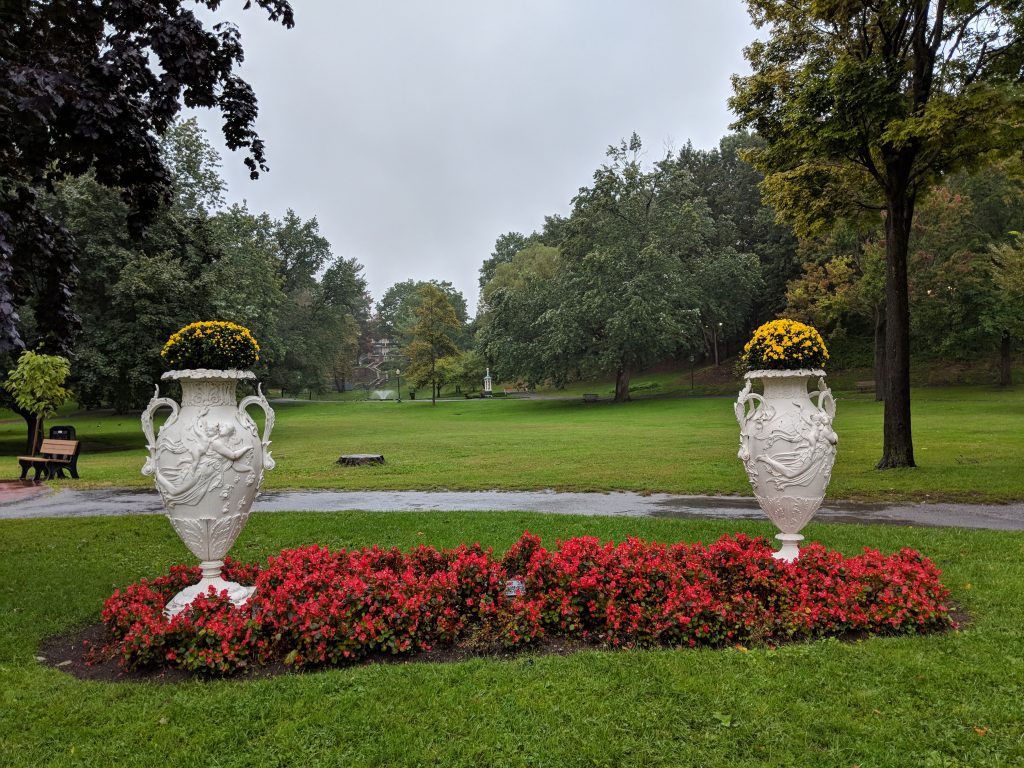
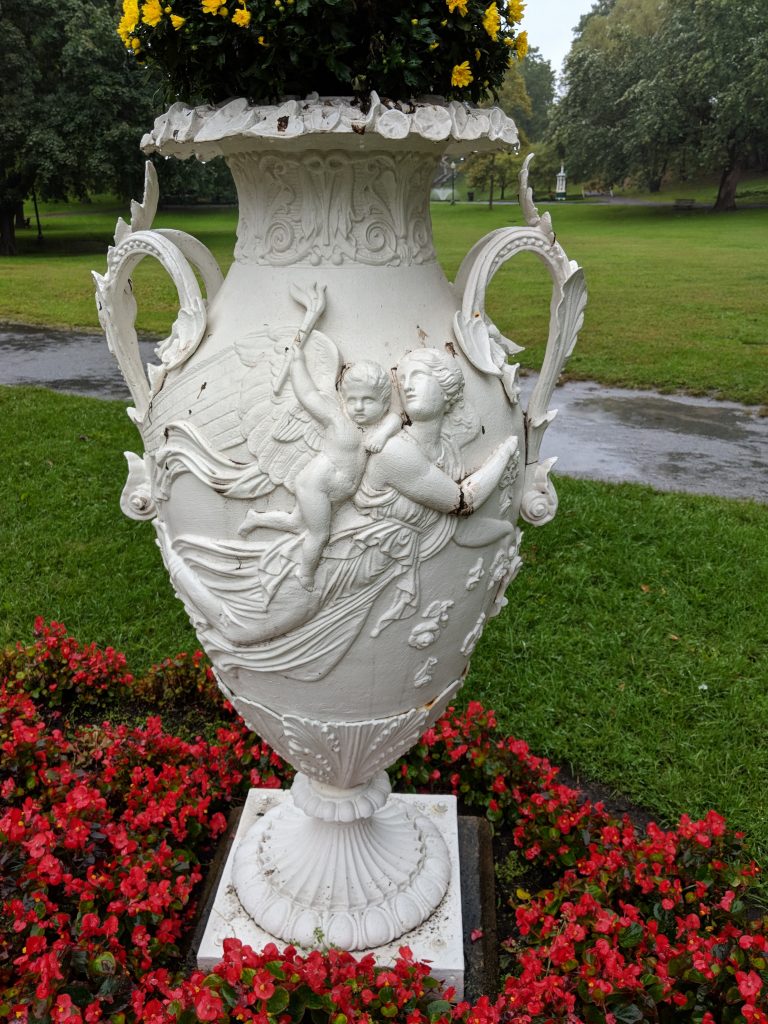
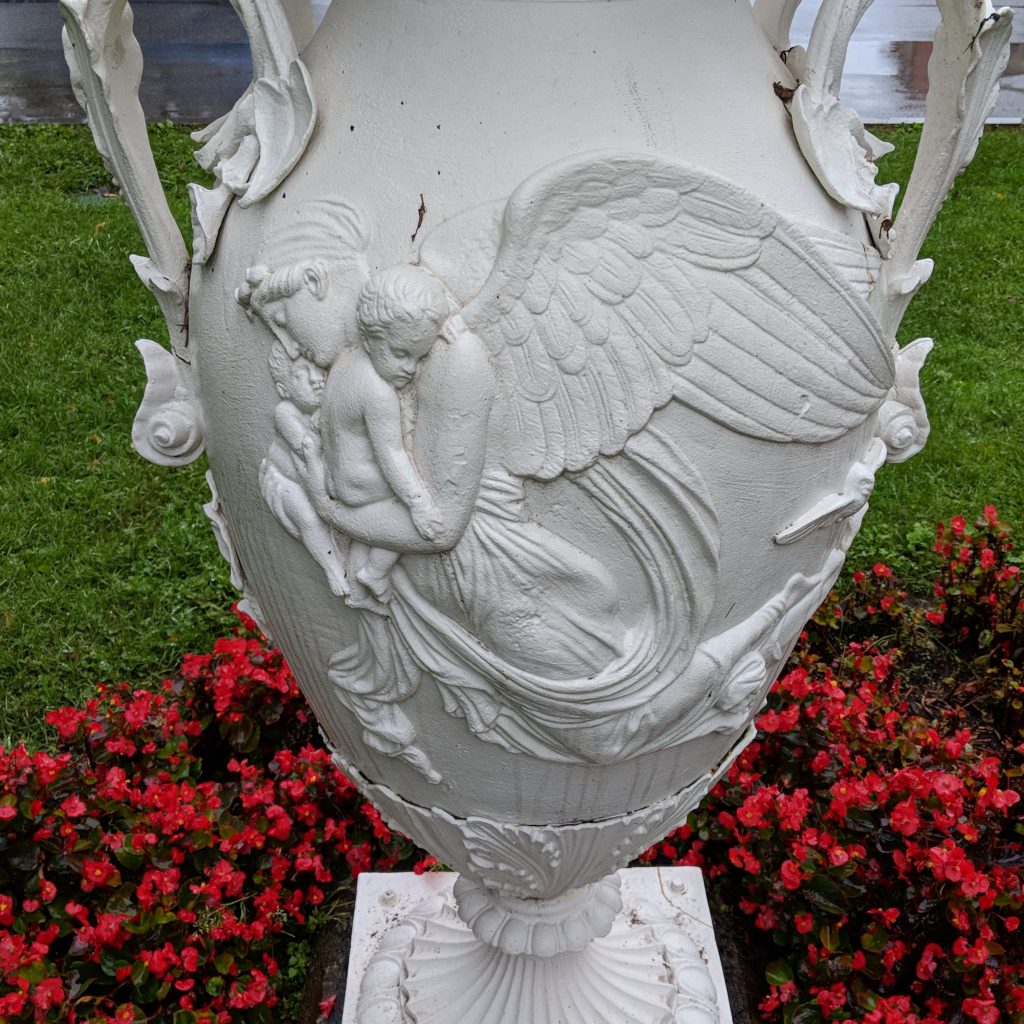
In Memory Of…
Saratoga Springs Visitor Center
Hudson Valley Railway (Trolley) Station
“This building was the Saratoga Springs passenger depot from 1915 to 1941. People could travel to and from Ballston Spa, Schenectady and Albany on trolleys of the Schenectady Railway, and to Troy and Hudson Falls on the Hudson Valley Railway, with many stops in between.“The Beaux-Arts style building was inspired by the classical architecture of ancient Roman baths. Important features are the vaulted ceiling, half-round windows and chestnut interior woodwork.
“Trucks, automobiles and buses eventually put the electric railway companies out of business. In 1941 the building became a drink hall where state-bottled waters were sold.” Interpretive Sign
I honestly didn’t stop by the Saratoga Springs Visitor Center until October of 2016. I was glad when I finally did and highly recommend stopping in for a short bit if you want to know the history of Saratoga Springs. Not only was I able to get information about all the springs and parks in town, I also got to stand in the old drink hall and imagine what it was like to be a lady sipping water in the era of trim corset waists, narrow skirts, and parasols.
I gathered my information from signs in Congress Park and the Visitors Center, as well as from Self-Guided Tour Brochures I collected at the Saratoga Springs Visitor Center.
Saratoga Springs Self-Guided Tour: Historic Congress Park
Saratoga Springs Self-Guided Tour: Mineral Waters
All photos were taken by me (Alicen).
